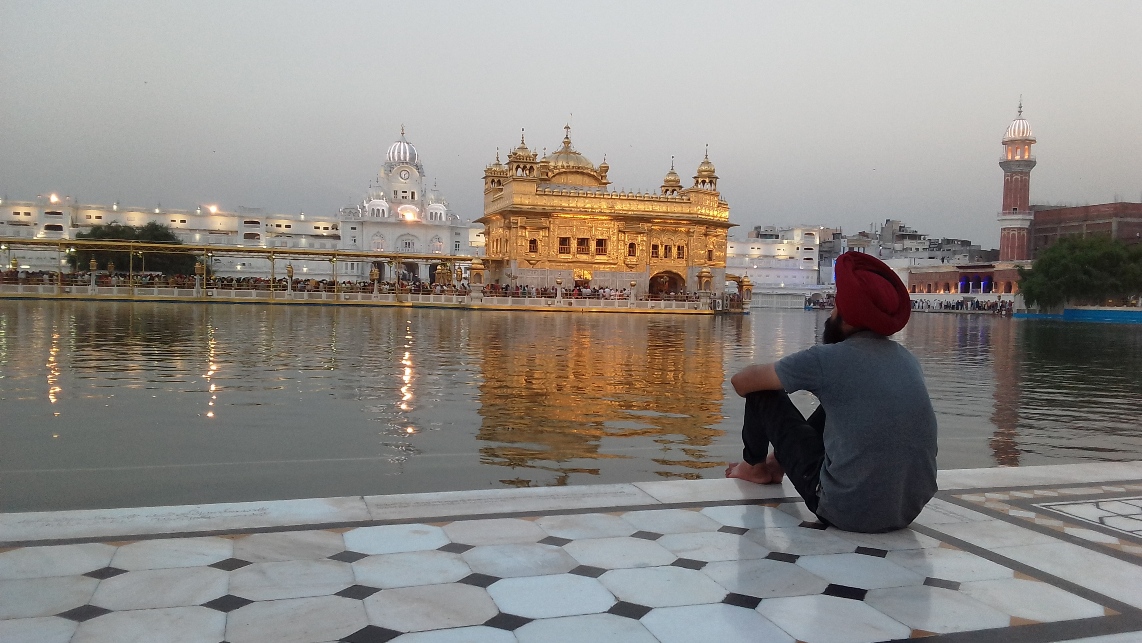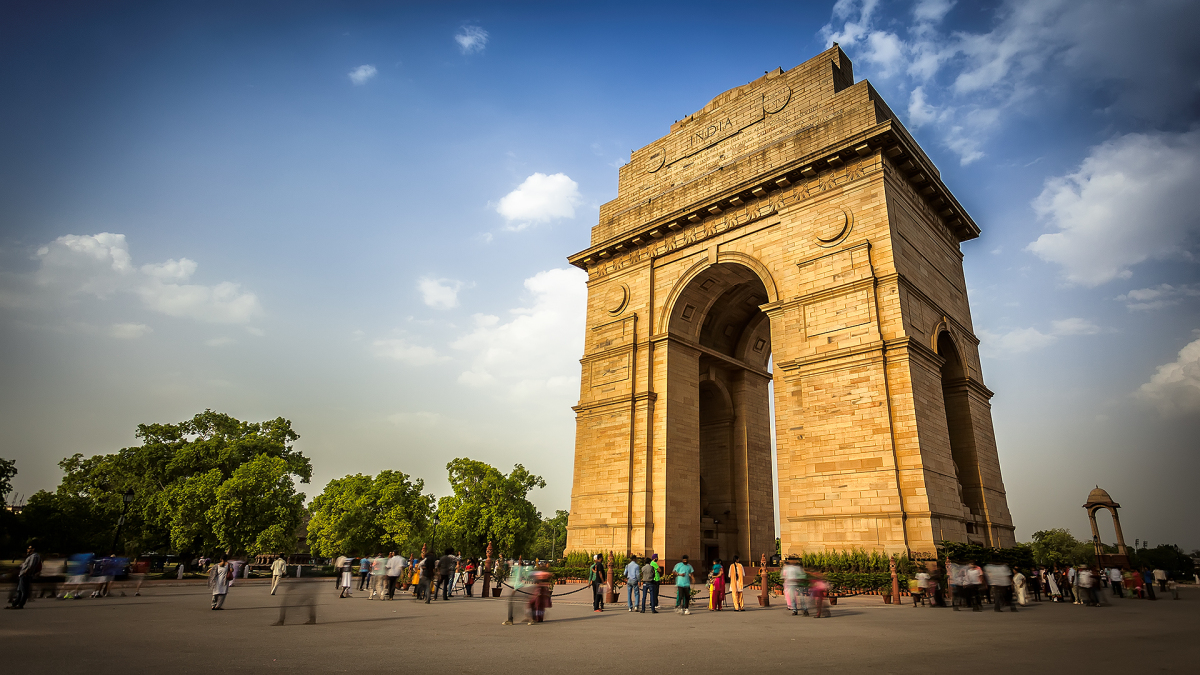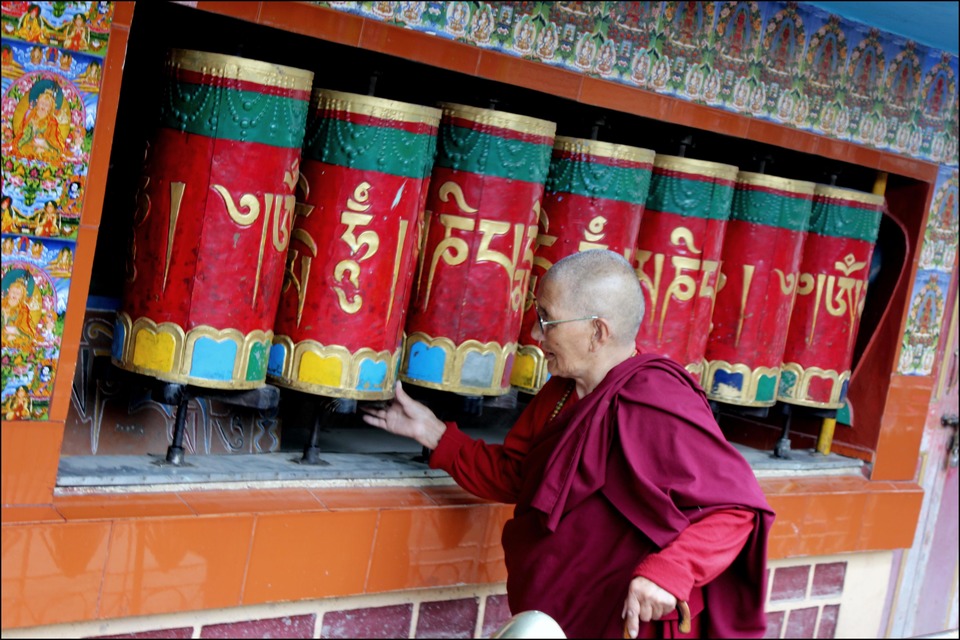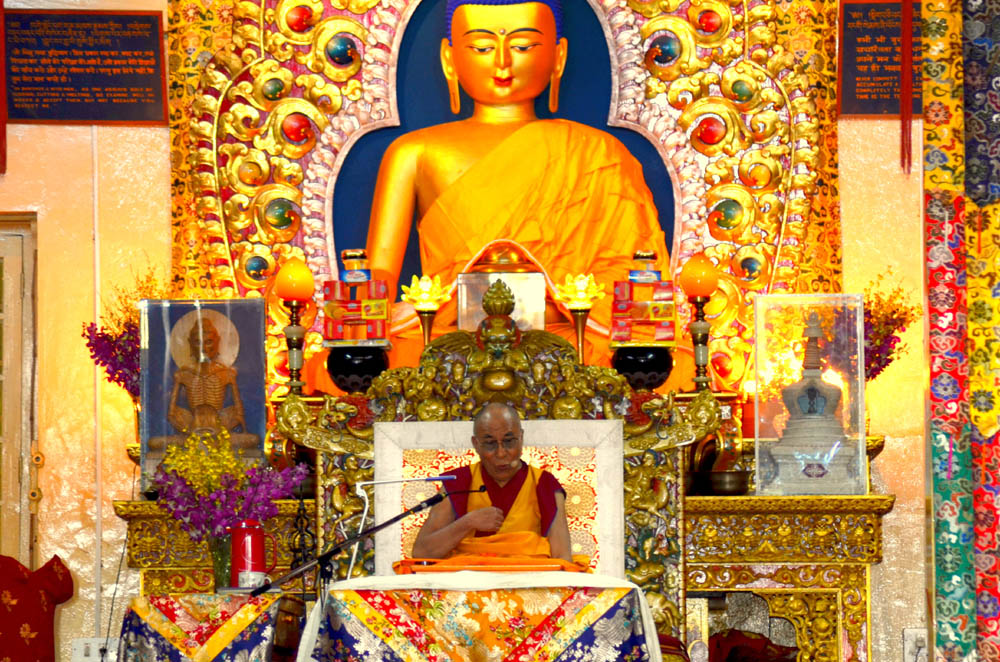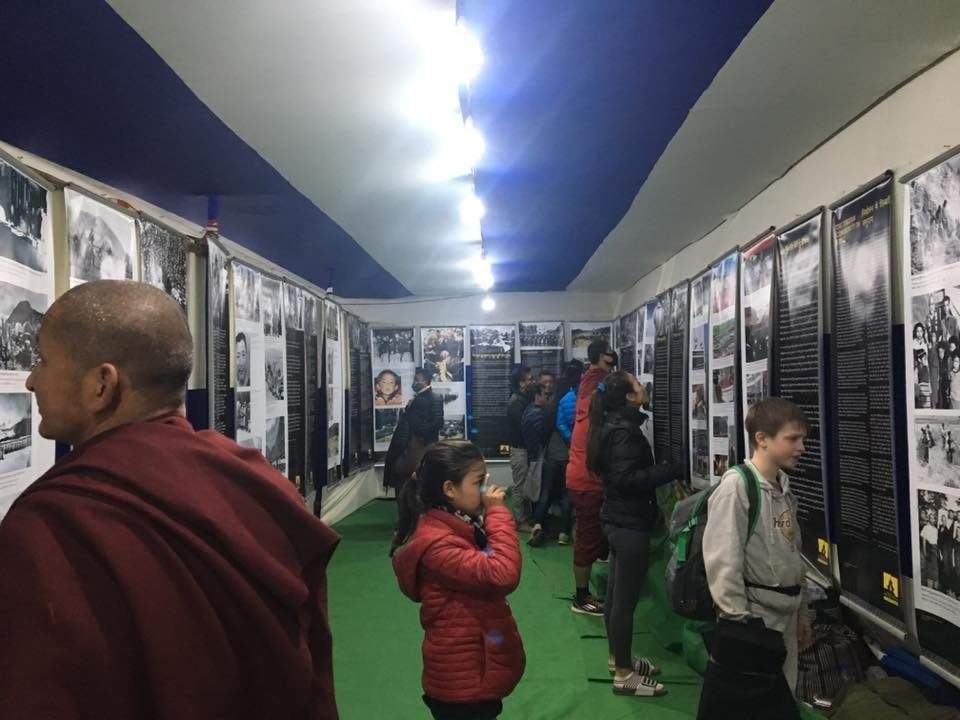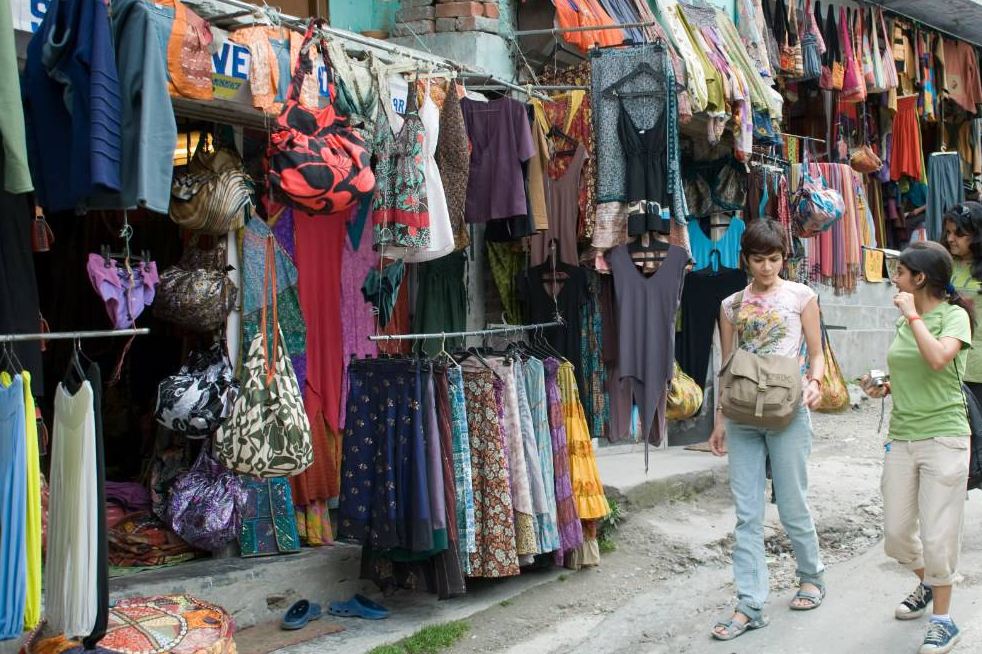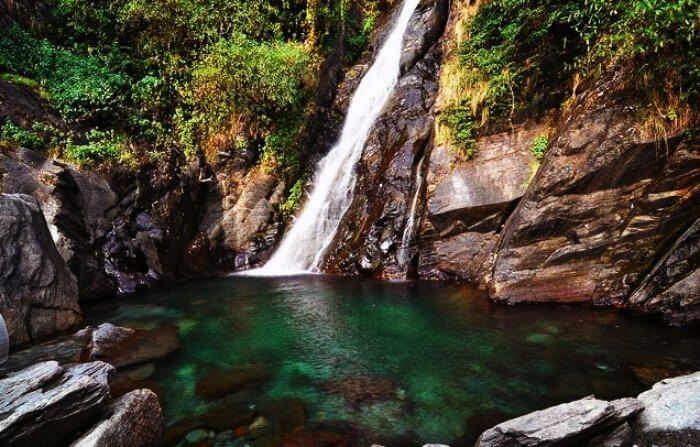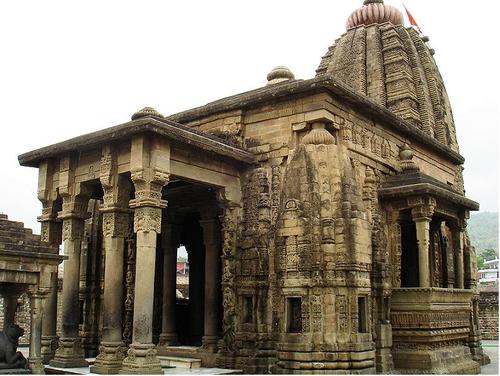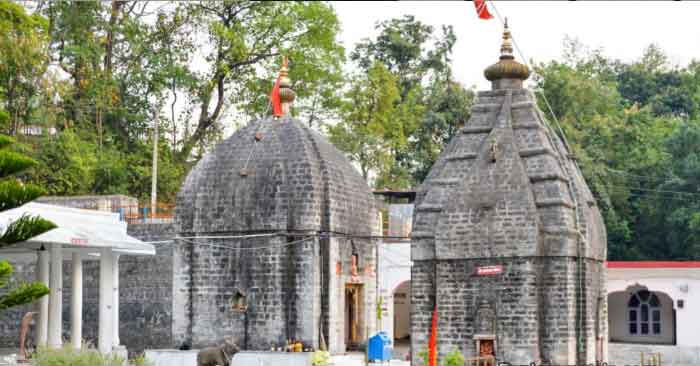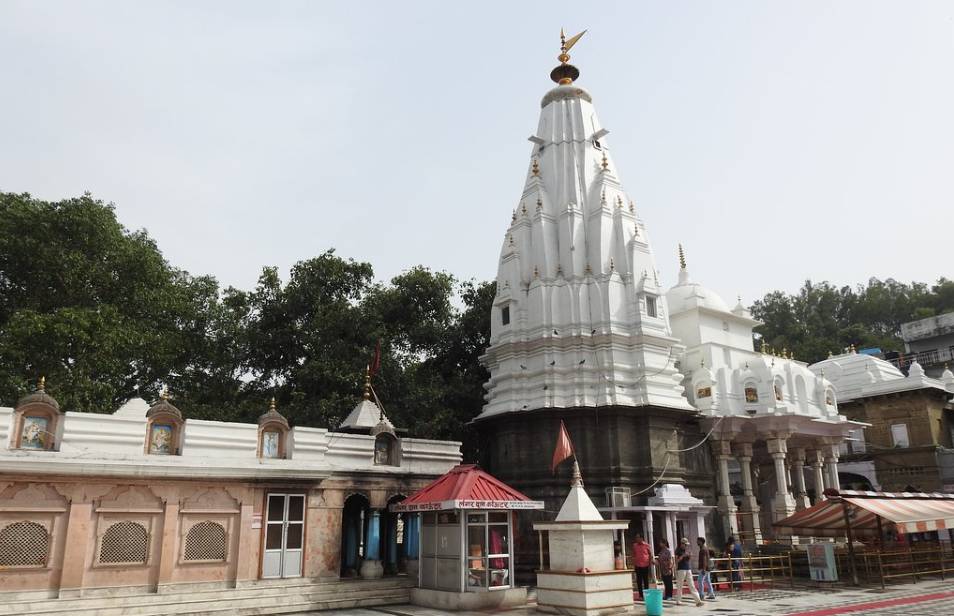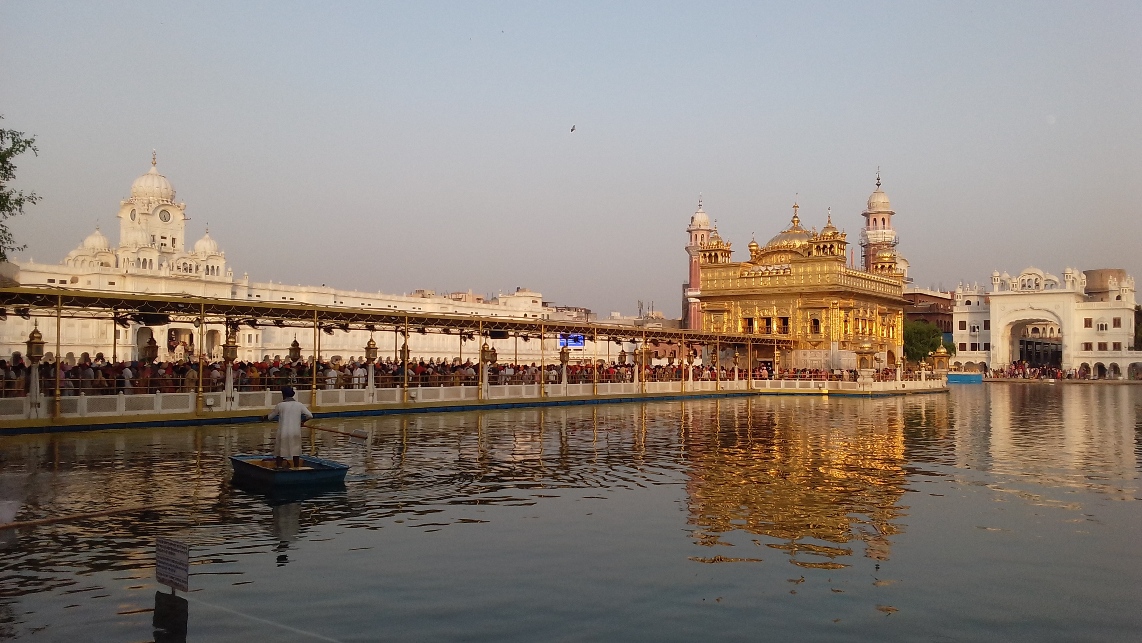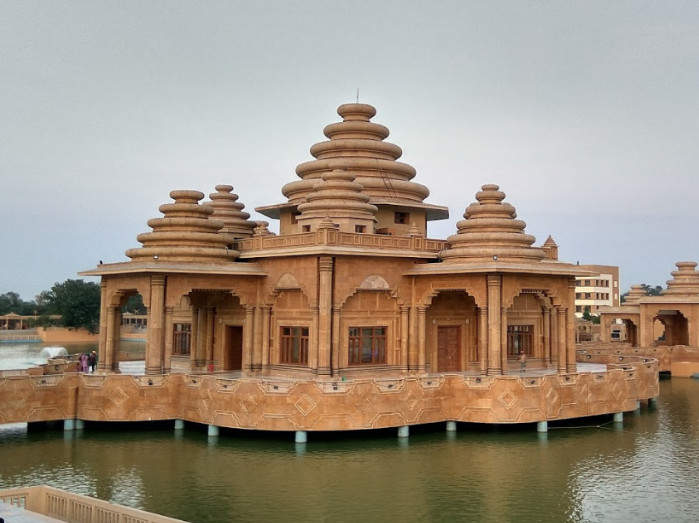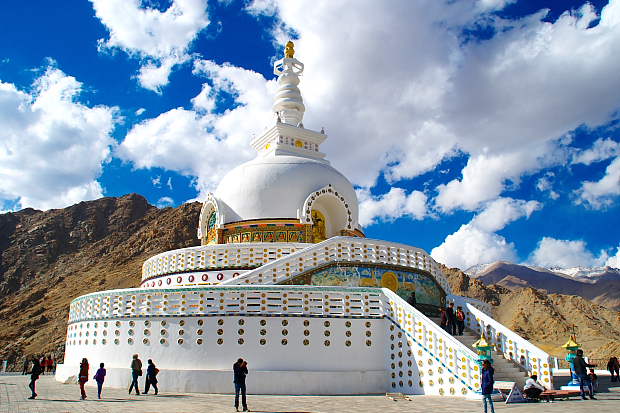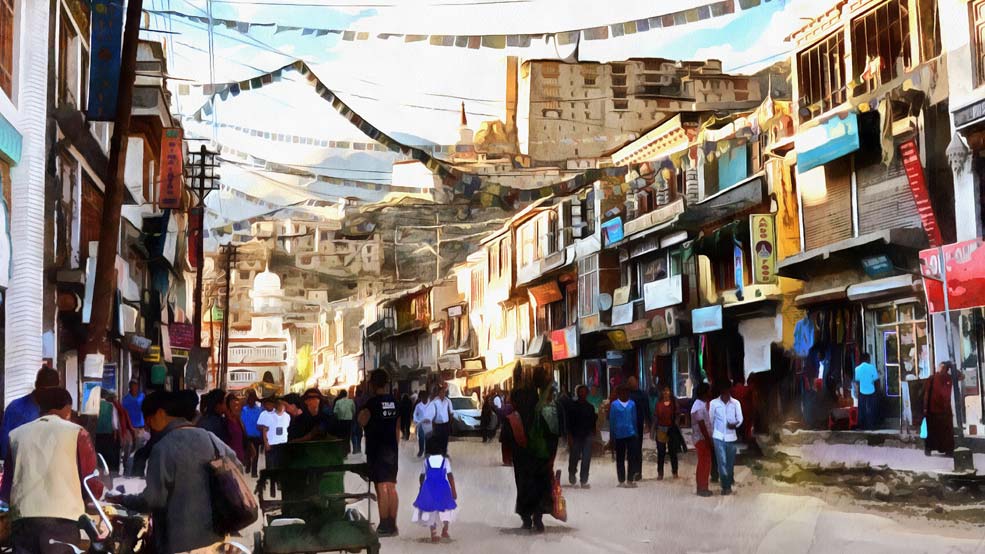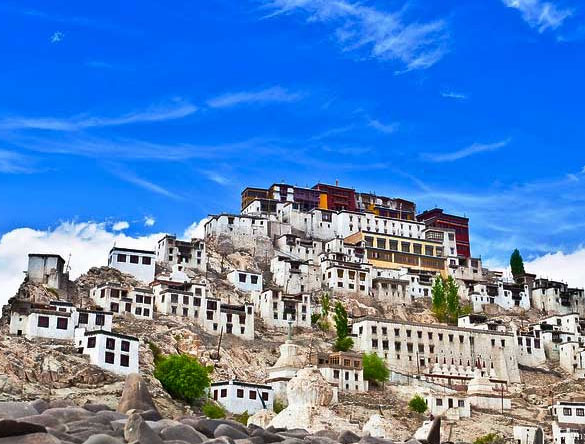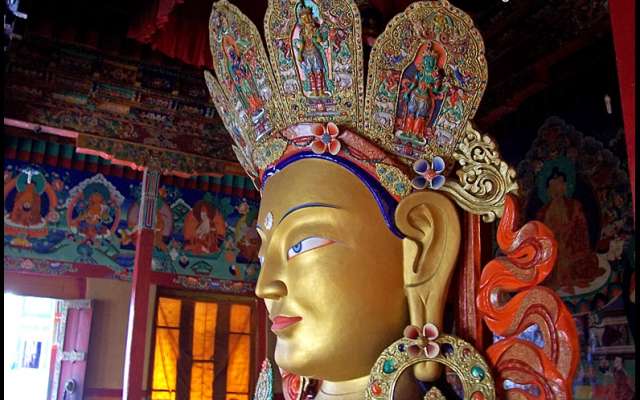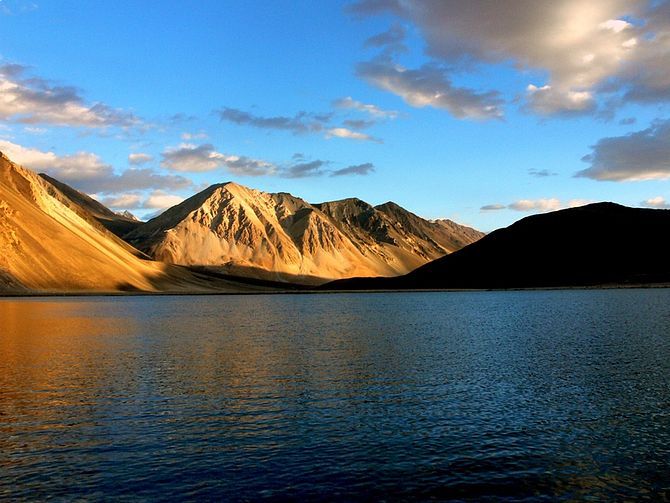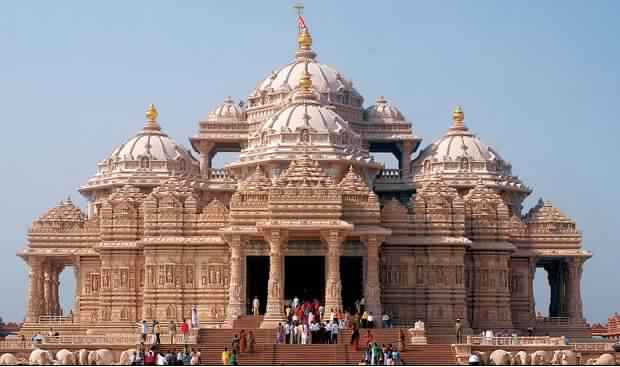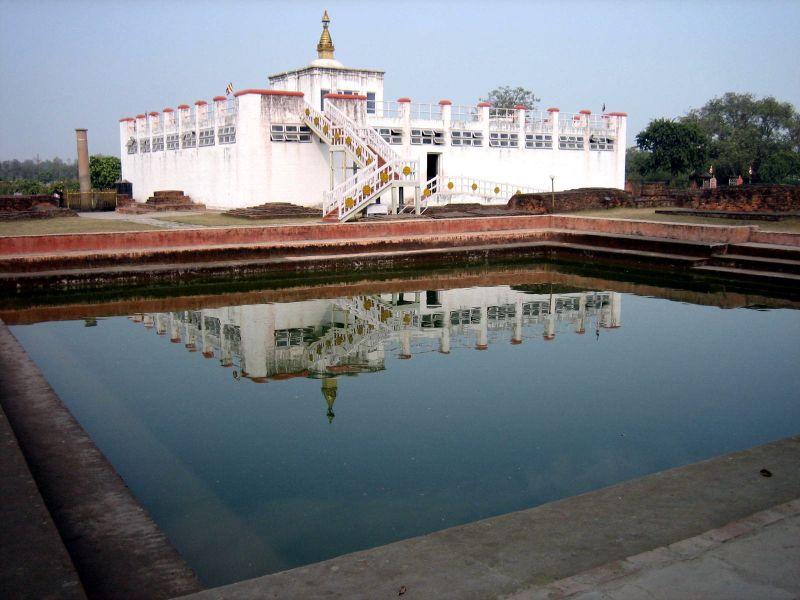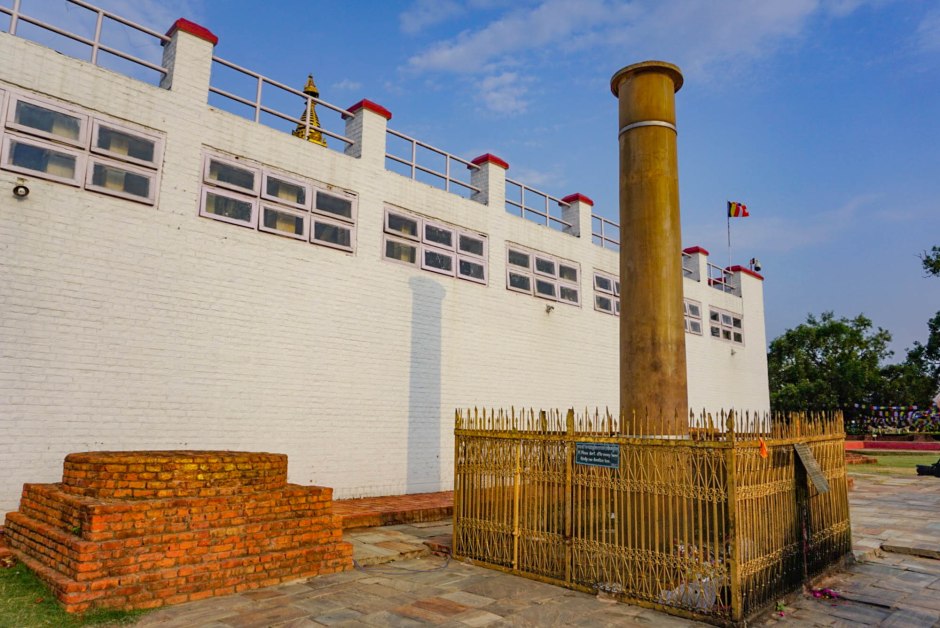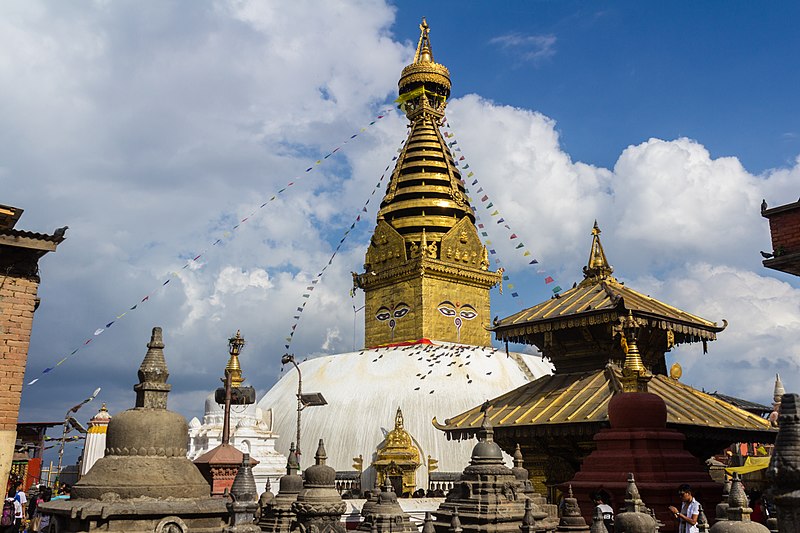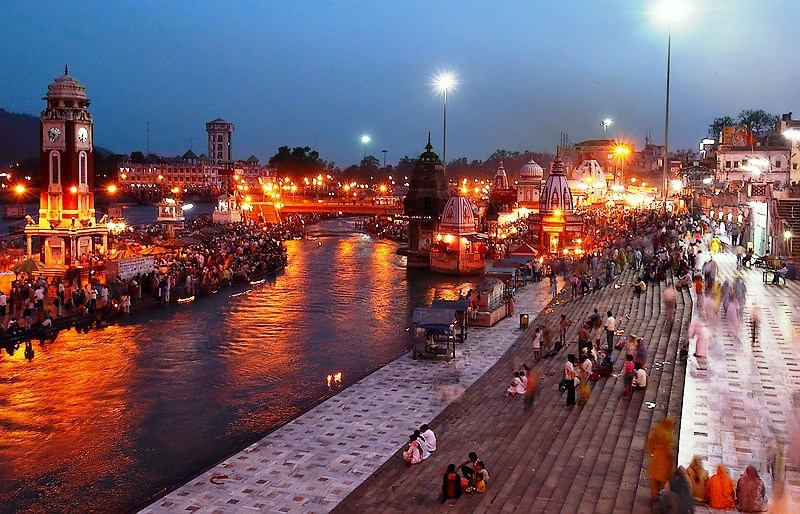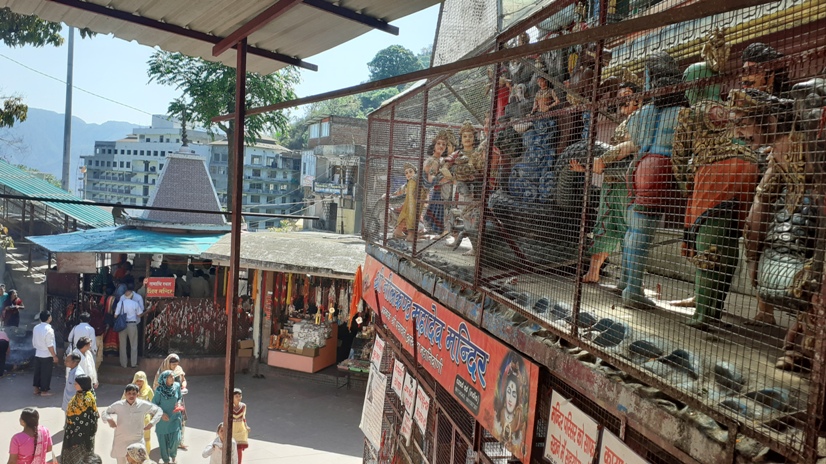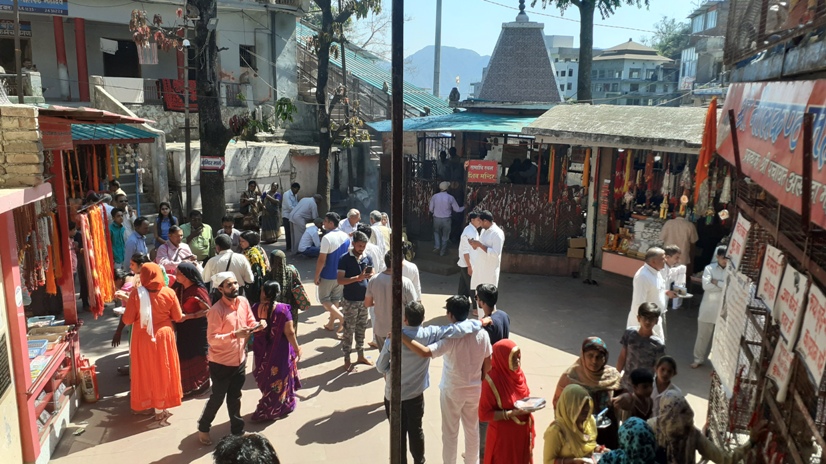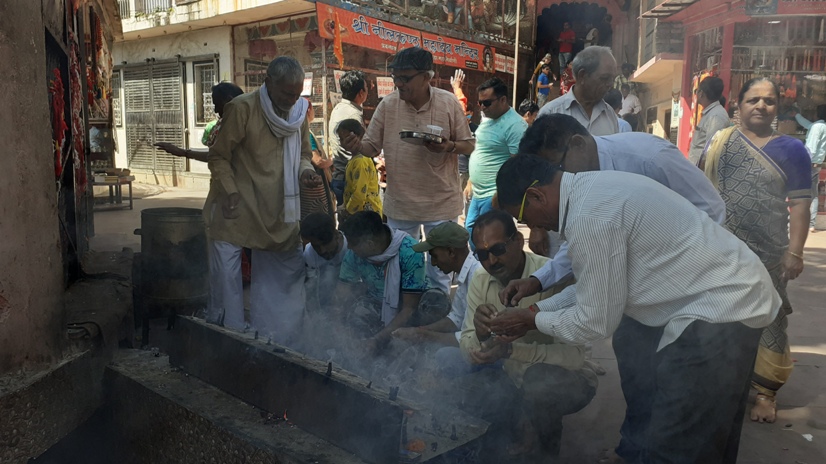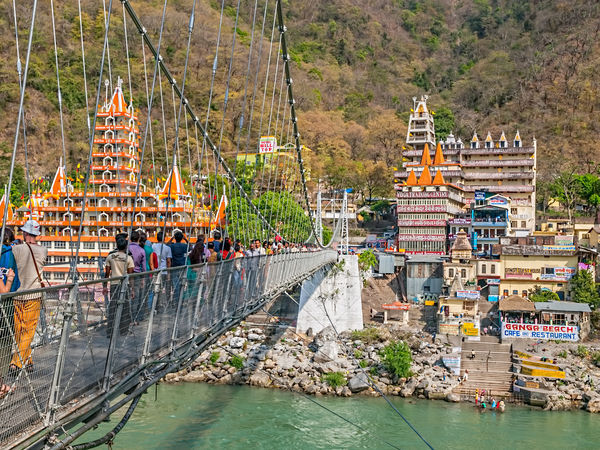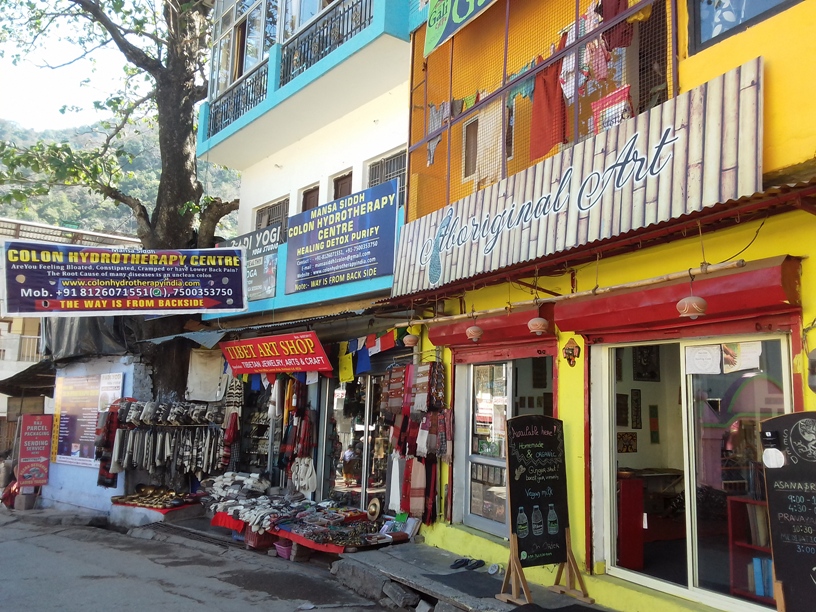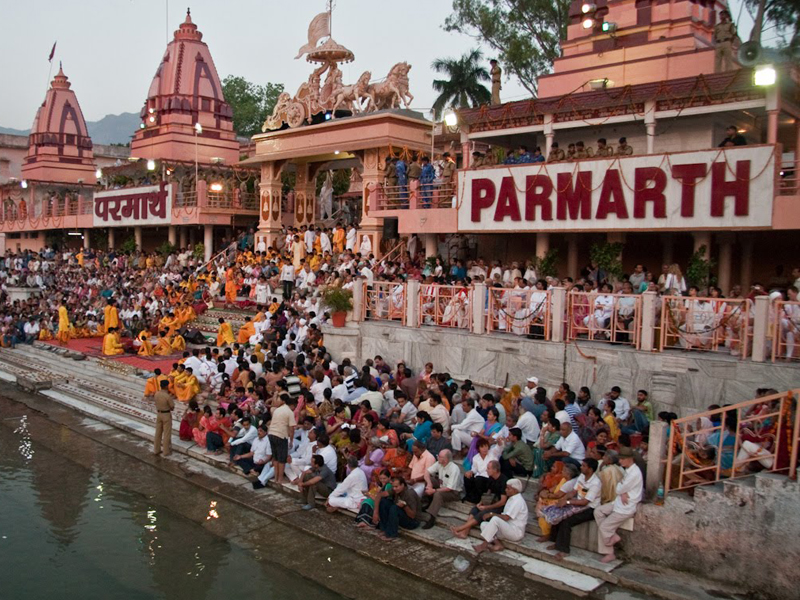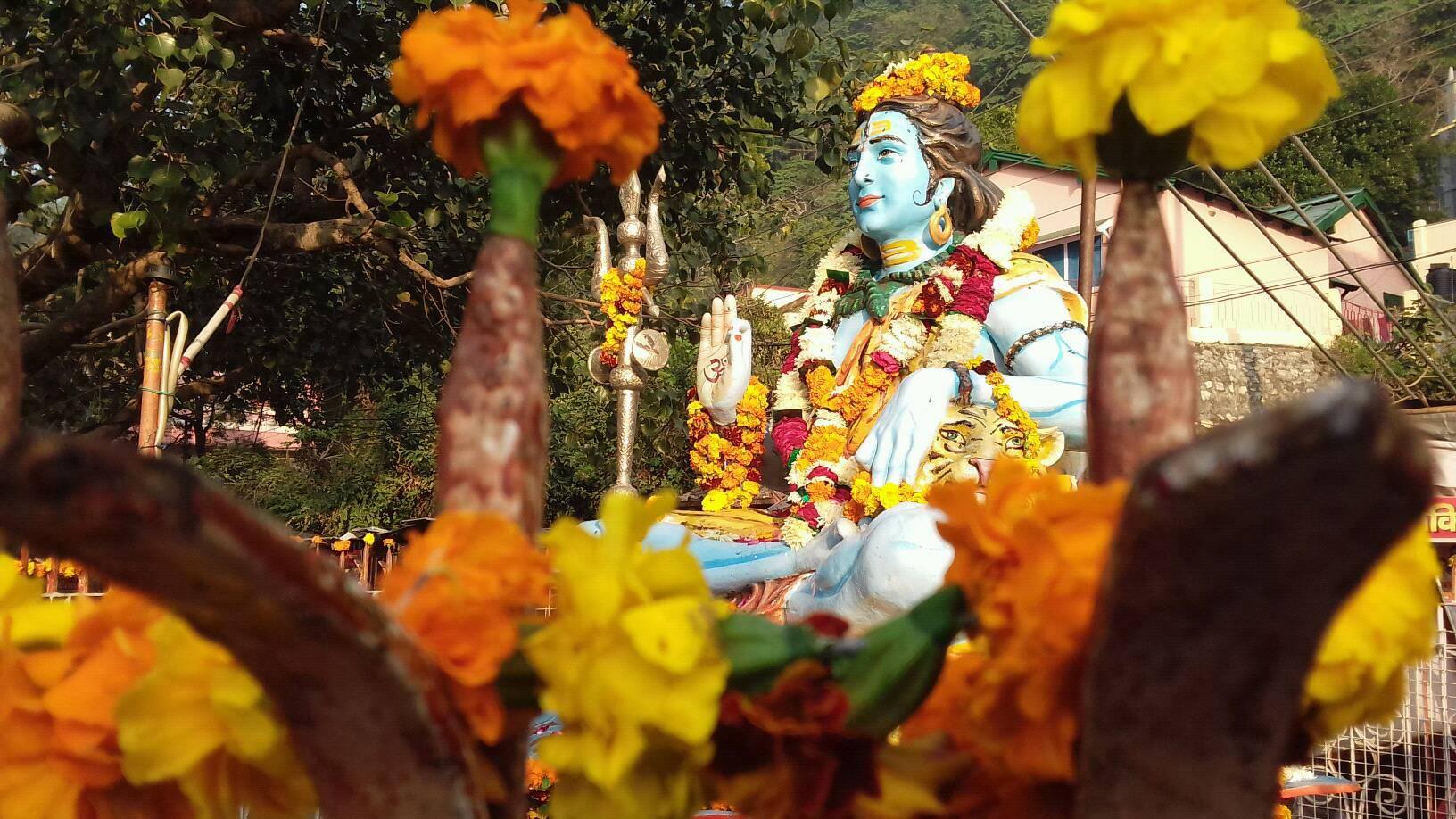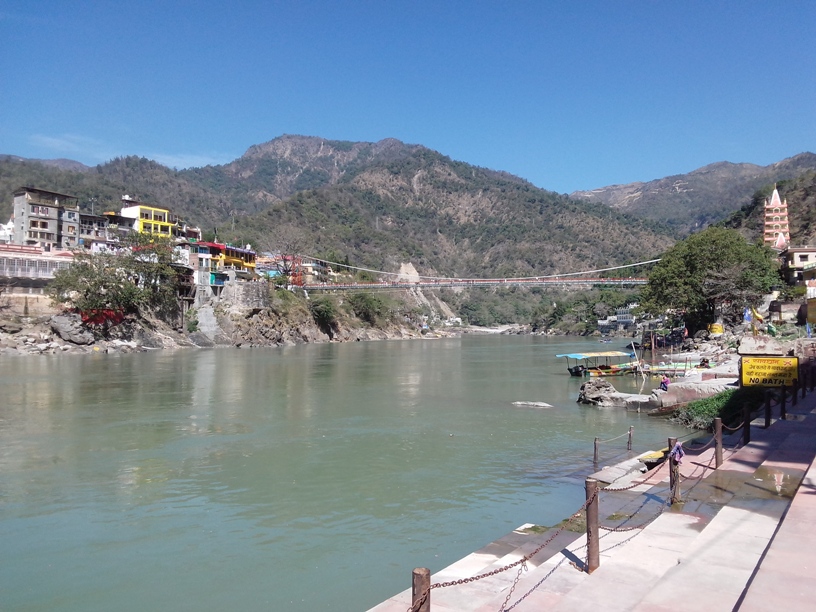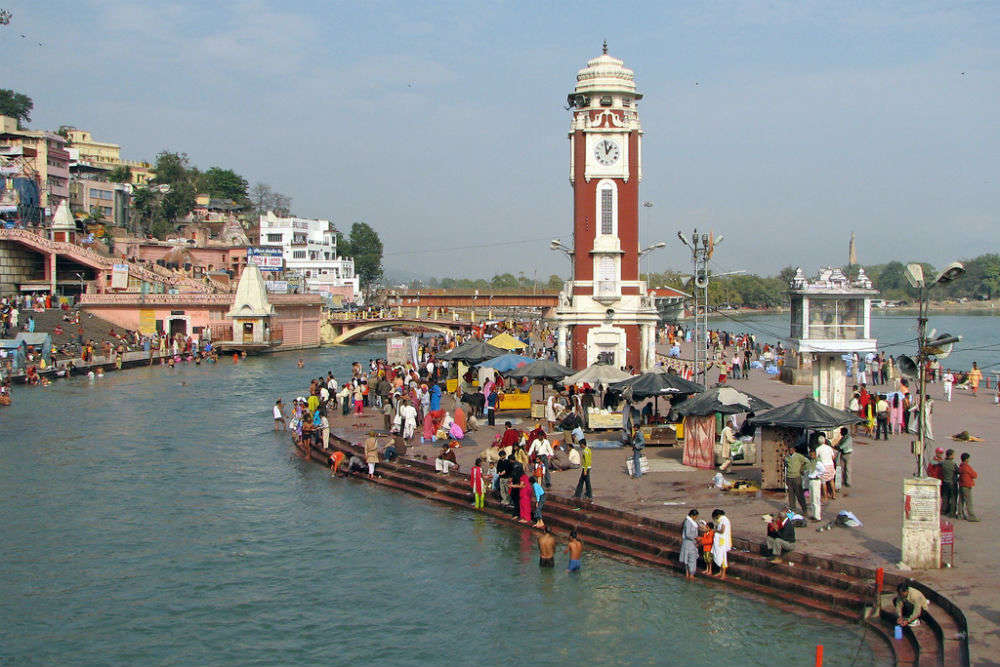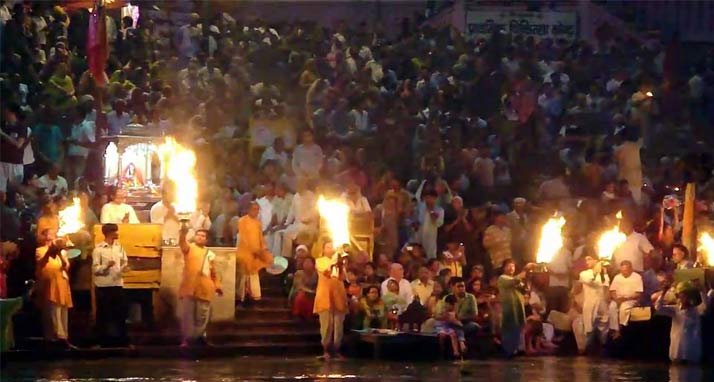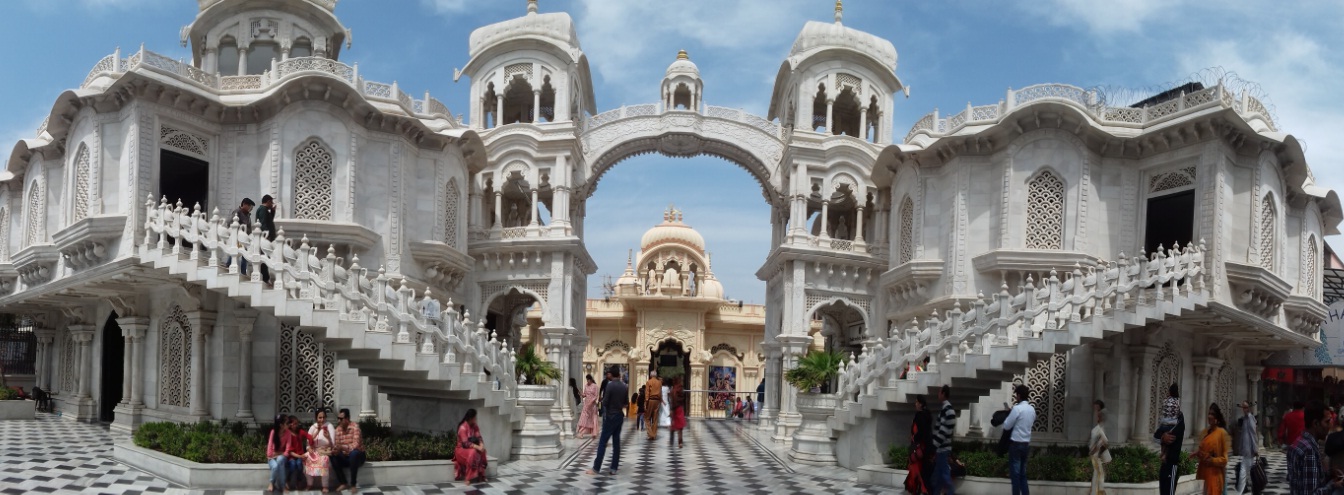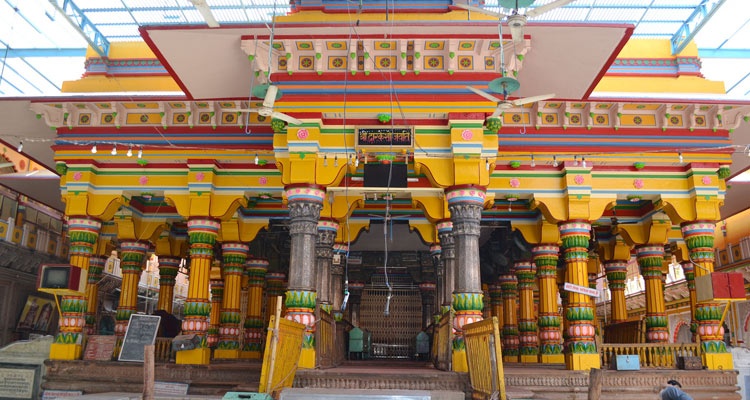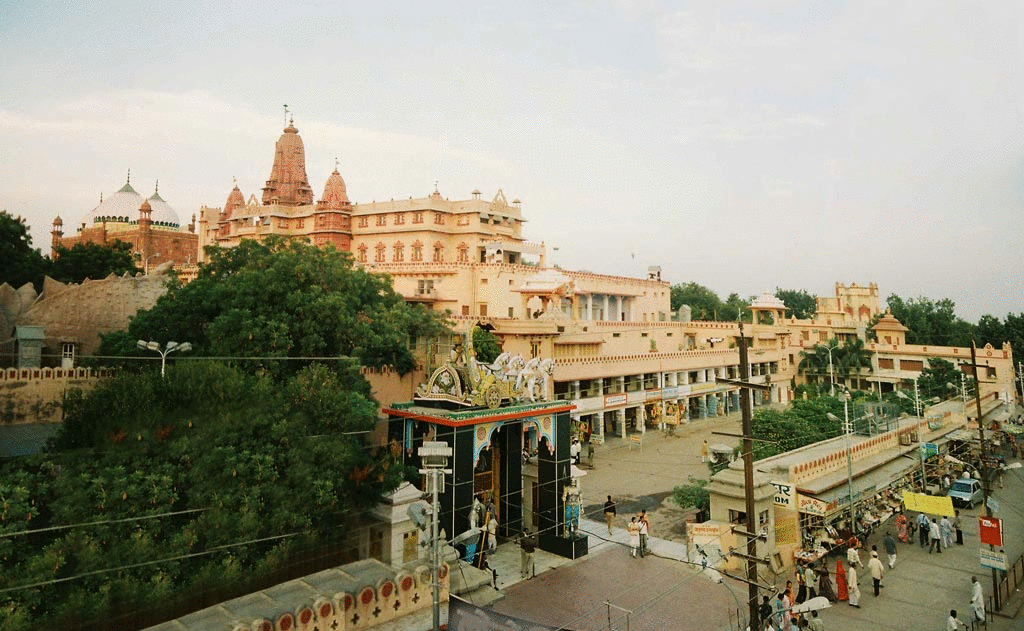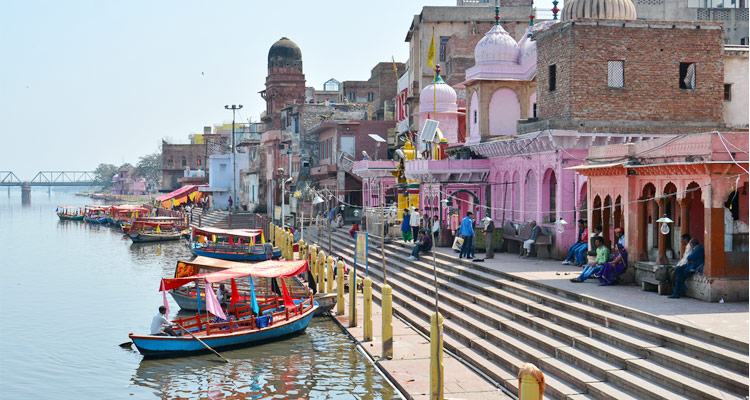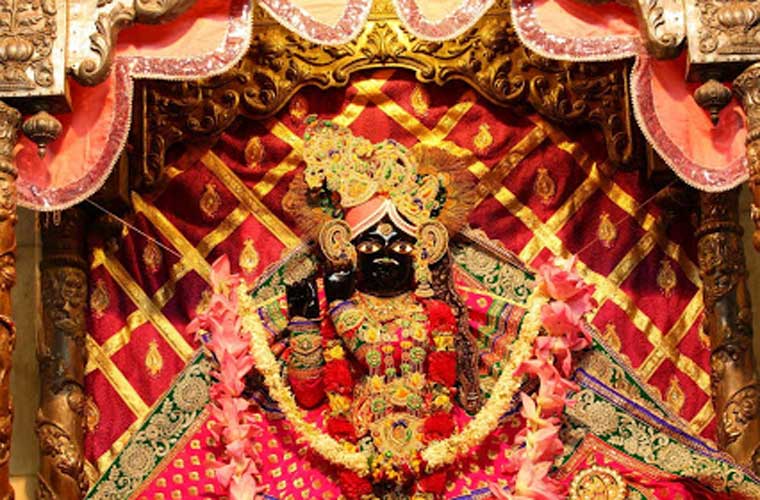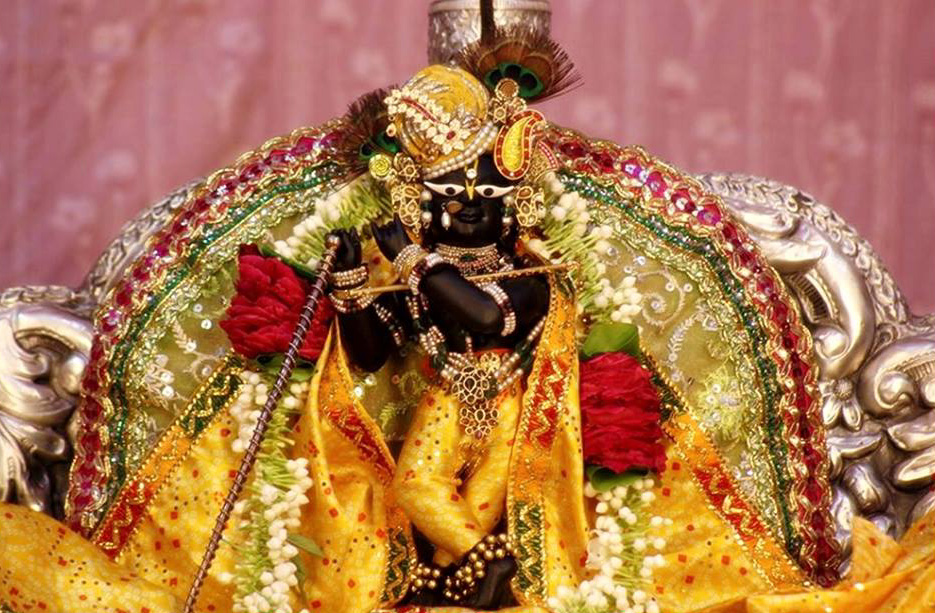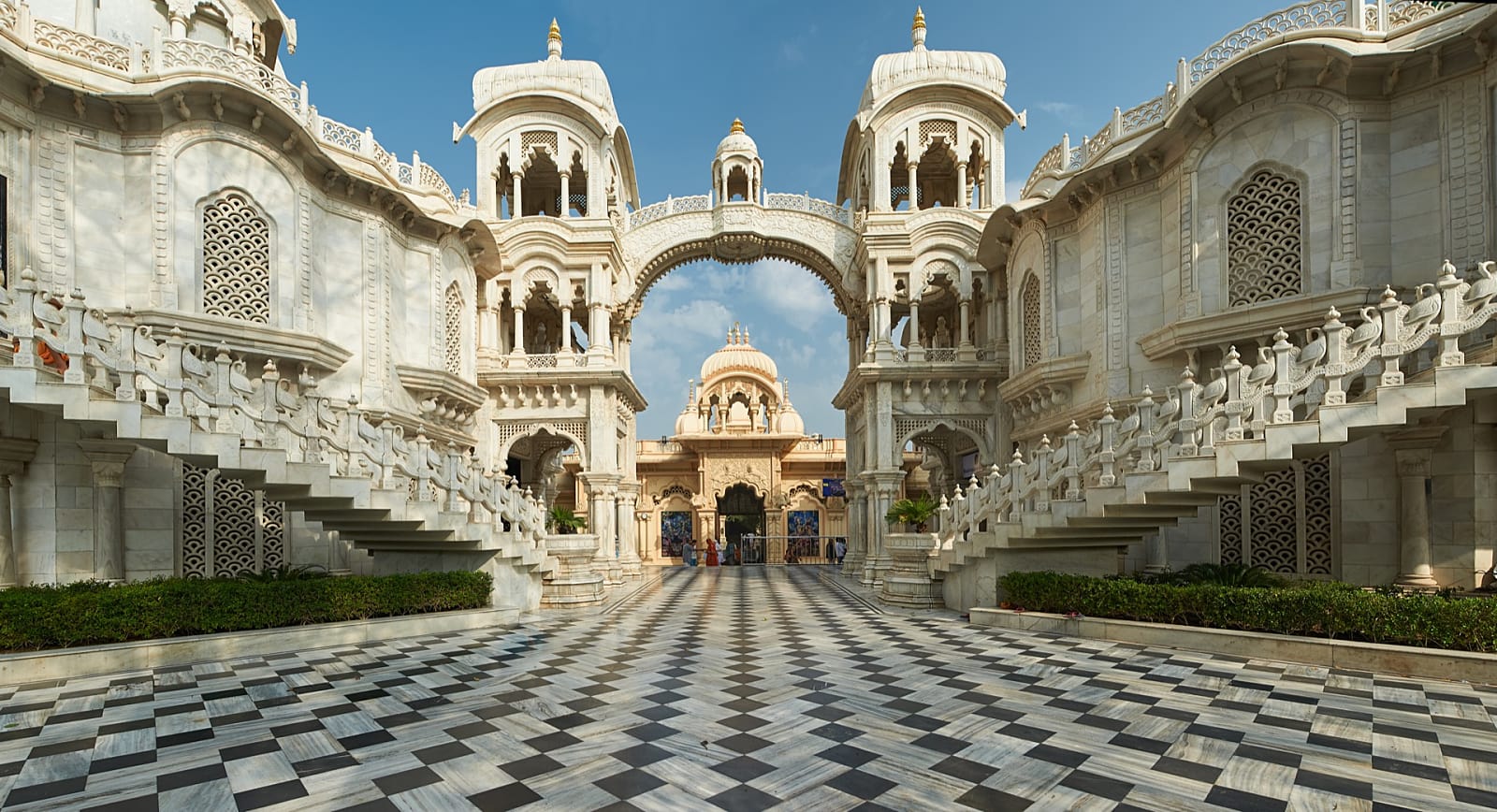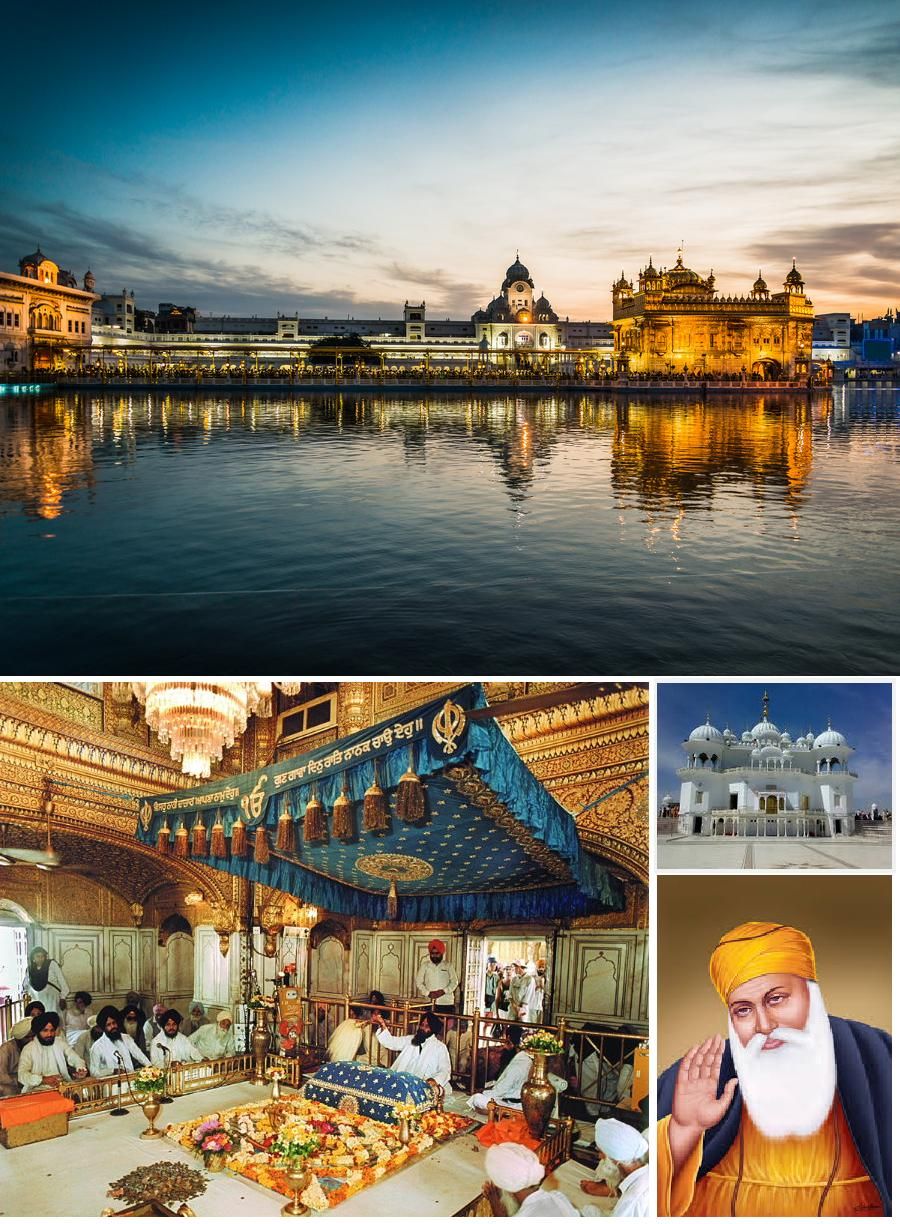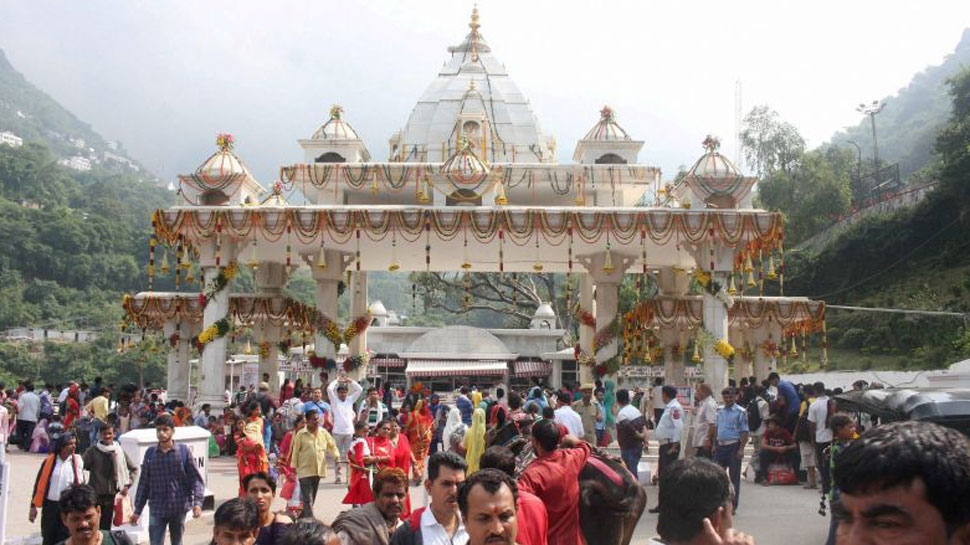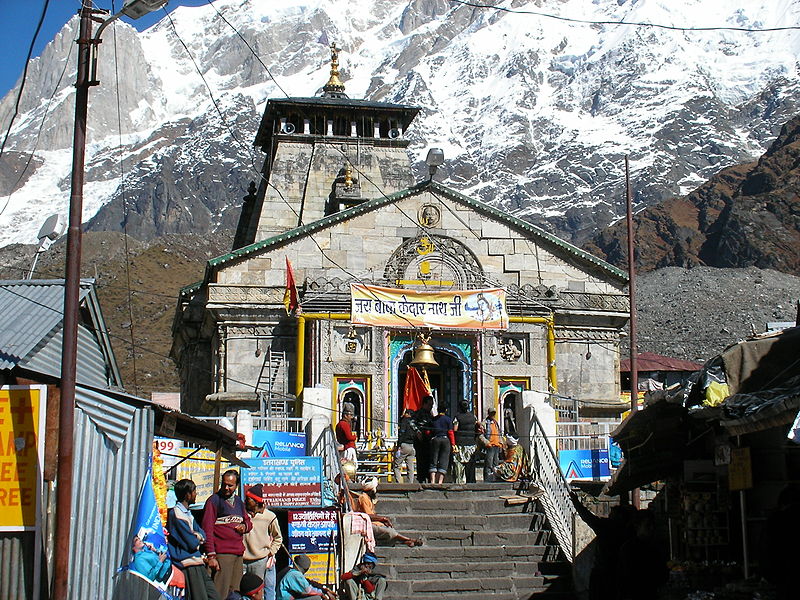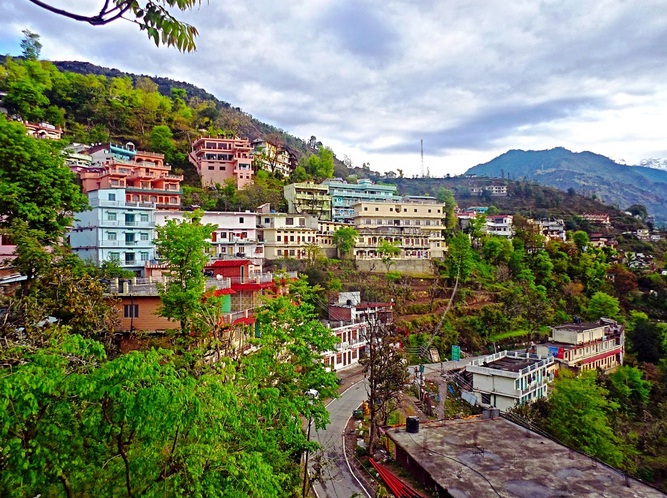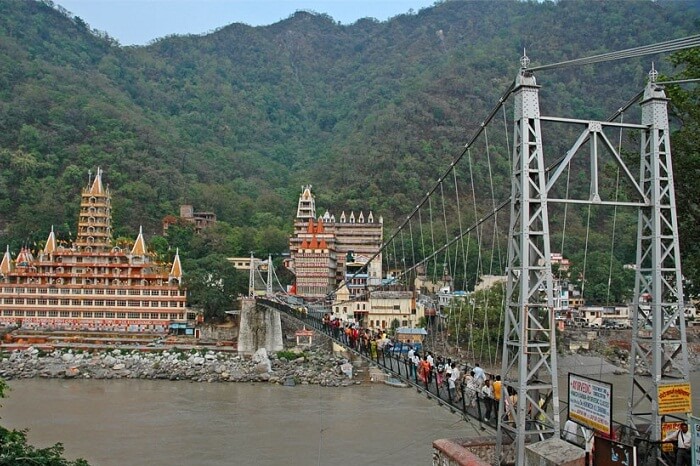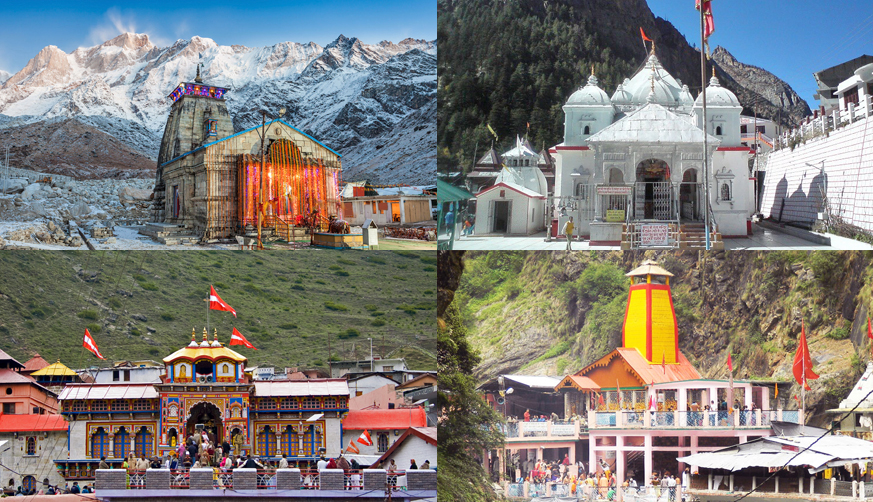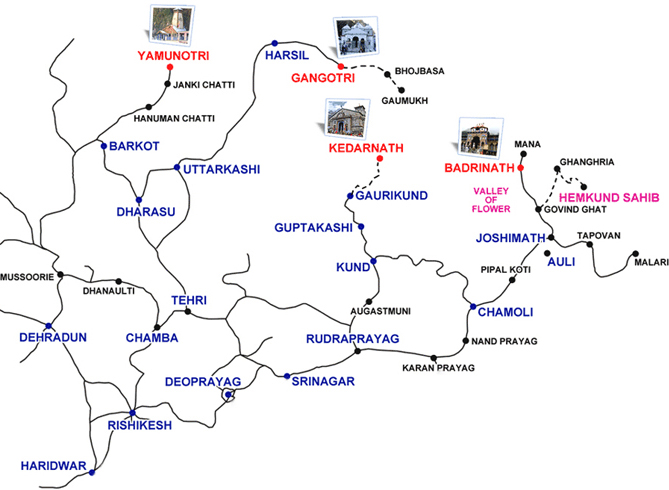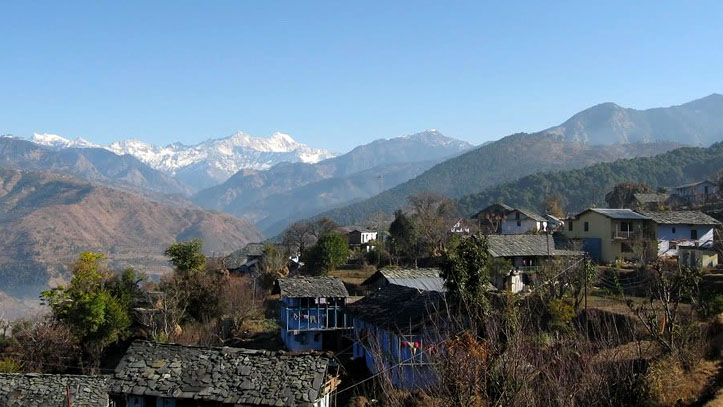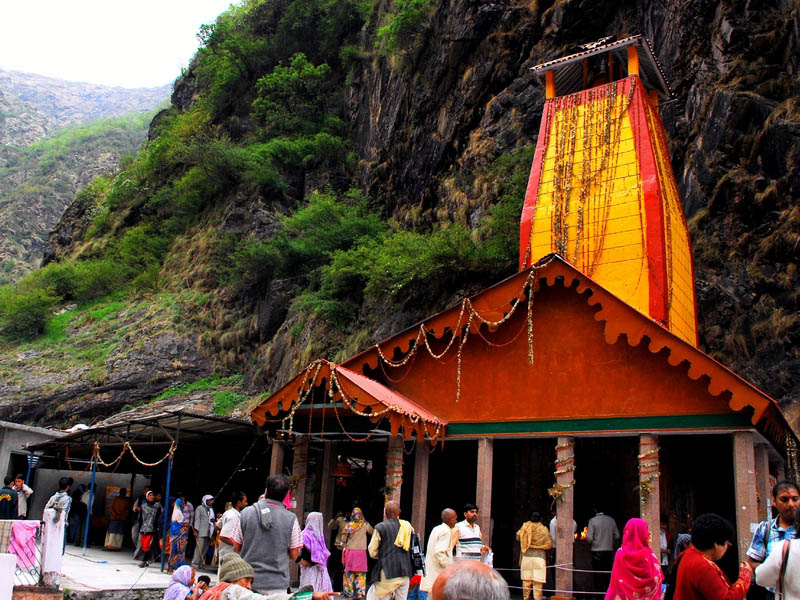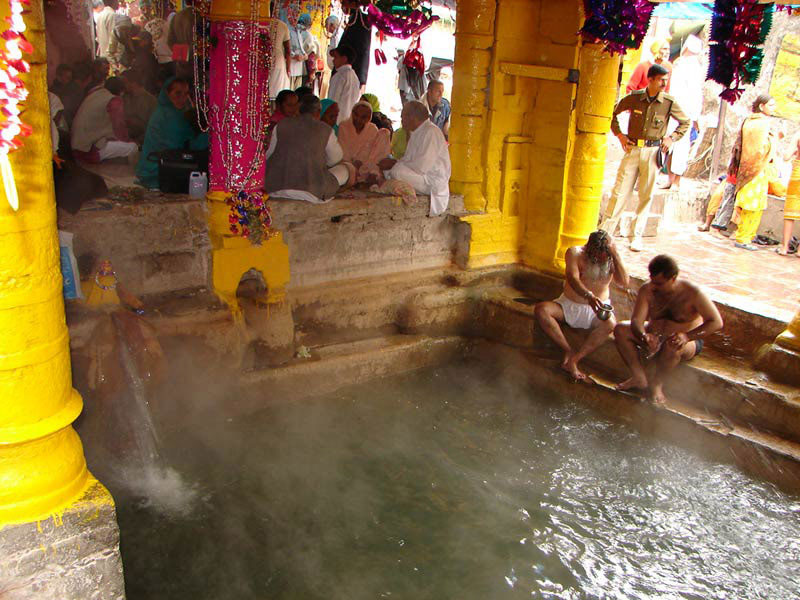Experience a remarkable journey through India and Nepal on this 14-day tour.
Destinations Covered
Delhi, India: The capital city of India, Delhi, serves as the gateway to this incredible journey. A blend of ancient history and modern vibrancy, it boasts impressive monuments like India Gate, Humayun’s Tomb, and Qutab Minar. Wander through the bustling streets of Old Delhi, where the Jama Masjid and Rajghat pay homage to Mahatma Gandhi.
Dharamshala, India: Nestled in the Himalayas, Dharamshala is a haven for spirituality. The Namgyal Monastery and the residence of the Dalai Lama draw visitors seeking solace and insight. The town’s serene ambiance and stunning surroundings offer a perfect retreat.
Amritsar, India: Known as the spiritual and cultural center of Sikhism, Amritsar boasts the iconic Golden Temple, a masterpiece of architectural beauty and religious significance. The Durgiana Temple and the historical context of the city make it a captivating destination.
Leh, India: Perched high in the Himalayas, Leh is a breathtaking blend of natural beauty and cultural heritage. Shey Palace, Thiksey Monastery, and the enigmatic Pangong Lake offer an immersive experience into Ladakh’s unique charm.
Lumbini, Nepal: As the birthplace of Lord Buddha, Lumbini is a pilgrimage site of great significance. Maya Devi Temple and other ancient ruins stand as a testament to the region’s rich religious history. Lumbini’s tranquil ambiance and spiritual aura create an unforgettable atmosphere.
Kathmandu, Nepal: Nepal’s capital, Kathmandu, is a vibrant city steeped in history and spirituality. Pashupatinath Temple, a UNESCO World Heritage site, is a sacred hub for Hindu devotees. Bouddhanath Stupa and Swayambhunath Stupa offer insights into Buddhism’s deep-rooted presence in the city.
Throughout this journey, you’ll traverse a diverse landscape of historical monuments, sacred sites, and stunning natural vistas, immersing yourself in the cultural and spiritual tapestry of India and Nepal.
Tour Overview
Begin in the bustling city of Delhi, where the blend of ancient monuments and modern skyscrapers creates a unique atmosphere. Immerse yourself in the spiritual essence of Dharamshala, home to the Namgyal Monastery and the residence of the Dalai Lama. Explore the historic Baijnath Temple and Mahakal Temple, delving into their rich heritage. Journey to the sacred city of Amritsar, where the Golden Temple and Durgiana Temple captivate with their intricate designs and spiritual significance.
Traverse the breathtaking landscapes of Leh, visiting Shey Palace, Thiksey Monastery, and the enchanting Pangong Lake. Embark on a scenic flight to Nepal, where Lumbini, the birthplace of Lord Buddha, welcomes you with ancient ruins, temples, and the serene Maya Devi Temple. Delve into Kathmandu’s vibrant culture with visits to Pashupatinath and Bouddhanath, immersing yourself in the spiritual heart of the region. This diverse and spiritually enriching tour offers a profound exploration of history, culture, and devotion across two captivating countries.
Detailed Tour Plan
DAY 01 ARRIVAL DELHI BY INTL FLIGHT
Today you will arrive in the at Delhi’s International Airport.
Following customs, immigration formalities and baggage collection, a representative will meet you as you exit the arrival terminal building and will escort you to coach Parking where you will be welcomed with floral garlands which is considered auspicious and a mark of respect to our guest here in India. After ceremonial welcome you will be transferred to your hotel (Check-in time is 1200 noon and early check-in would be subject to availability)
India’s capital and a major gateway to the country, contemporary Delhi is a bustling metropolis, which successfully combines in its folds – the ancient with the modern. Amidst the fast spiraling skyscrapers the remnants of a bygone time in the form of its many monuments stand as silent reminders to the region’s ancient legacy. The first impressions for any visitor traveling in from the airport are of a specious, garden city, tree-lined with a number of beautiful parks.
After check in at the hotel, remainder of the day at leisure
Overnight at the hotel
DAY 02 DELHI – CHANDIGARH – DHARAMSHALA BY TRAIN/SURFACE
After early breakfast in the hotel, check-out of your rooms, you will be transferred to New Delhi Railway Station to board your train to Chandigarh
Depart: Delhi at: 0740 Am by: Kalka Shatabadi
Arrive: Chandigarh at: 1105 Am Seat Class: AC Chair Car
Upon arrival at Chandigarh, you will be driven to Dharamshala (250 Kms/05 Hours)
On arrival, check-in at your hotel.
Overnight at the hotel
DAY 03 DHARAMSHALA
After breakfast at the hotel, you will today proceed for sightseeing tour of Dharamshala/MCloadganj
You will visit Namgyal Monastery, overlooking the mountain ranges of Dhauladhar, the Namgyal Monastery is situated within the Tsuglagkhang complex. This complex also is the proud home to the residence of Dalai Lama, among various other shrines, temples, bookstores, souvenir shops etc.
The residence of the spiritual leader is out of bounds for tourists but the other parts of the complex are wonderful and must be visited by all tourists.
Tsuglagkhang is the place where the Dalai Lama resides. It is one of the most significant places of worship which attracts devotees from all over the world and serves tourists as well. This complex has a monastery, various stupas and temples, a museum, a library, a bookstore and a cafe. Except for Dalai Lama’s residence, every other part of the complex is open for tourists. If lucky, one can even get to meet His Holiness. The complex houses a beautiful statue of Lord Buddha as well as statues of Chenrezig and Guru Rinpoche.
The museum inside the complex tends to be a popular choice amongst the tourists and houses many imprints of Tibetan art and culture. These include history documents, pottery, handicrafts, paintings etc. The museum gives tourists an insight into Tibetan culture and at the same time, the various struggles faced by them lately. The structure of the Tibet Museum is influenced by Tibetan architecture which is unique and innovative
After visit, you will walk through streets where you can buy number of Buddhist and Tibetan sovereigns, and collectibles in Mcleodganj. You can shop for Tibetan carpets, Thangka paintings, jewellery, artifacts, handicrafts, books on Tibet and more.
You will later visit Bhagsunath temple, surrounded by beautiful pools and lush greenery, this temple is located at a height of 1770m above sea level and attracts a huge number of devotees and tourists throughout the year. The hot spring pools around this temple are believed to be sacred and contain miraculous powers of healing. The temple was built by King Bhagsu and is dedicated to Lord Shiva. Also make a short trek to Bhagsu waterfall, which is also a picturisque point for all toursits.
After visit, return back to your coach and drive back to your hotel.
Overnight at the hotel
DAY 04 DHARAMSHALA
After breakfast at the hotel, you will today proceed to famous Baijnath Temple and Mahakal temple. (45 Kms/01 Hour)
The Baijnath temple has been continuously under worship ever since its construction in 1204 A.D. by two local merchants named Ahuka and Manyuka. The two long inscriptions in the porch of the temple indicate that a temple of Siva existed on the spot even before the present one was constructed. The present temple is a beautiful example of the early medieval north Indian temple architecture known as Nagara style of temples. The Svayambhu form of Sivalinga is enshrined in the sanctum of the temple that has five projections on each side and is surmounted with a tall curvili near Shikhara. The entrance to sanctum is through a vestibule that has a large square Mandapa in front with two massive balconies one each in north and south.
There is a small porch in front of the mandapa hall that rests on four pillars in the front preceded by an idol of Nandi, the bull, in a small pillared shrine. The whole temple is enclosed by a high wall with entrances in the south and north. The outer walls of the temple have several niches with images of gods and goddesses. Numerous images are also fixed or carved in the walls. The outer doorway in the porch as also the inner doorway leading to the sanctum of the temple are also studded with a large number of images of great beauty and iconographic importance. Some of them are very rare to be found elsewhere.
Besides this temple there are other ancient shrines in and around the place such as Mahakala temple complex that has recently been renovated, the Sidhanath temple, Mukutanath temple etc. Besides the serene surroundings and salubrious climate of middle range hills of Baijnath, tourists interested in adventure can also enjoy paragliding at nearby (about 10 km) Bir and go for trekking in the region.
Also visit Bajreshwari Devi Temple is a popular Hindu pilgrimage site in Kangra. It is said to be constructed by Goddess Bajreshwari itself at a place where once the famous Ashwamedh or horse-sacrifice took place. It is said that the temple was not known as Bajreshwari Devi Temple when for the first time it was built. According to the history of this region, the temple was attacked by Mohammad Ghazni, the notorious invader and ruined in 1009. Later, the temple was reconstructed and reopened to the public in 1920. The temple of Bajreshwari Devi is one of the few remaining temples from glorious past of Kangra
After visits, return back to hotel.
Remainder of the day at leisure
Overnight at the hotel
DAY 05 PALAMPUR – AMRITSAR BY SURFACE
After breakfast at the hotel, you will be driven to Amritsar (245 Kms/06 hours)
The name Amritsar means ‘holy pool of nectar’ and the city was named for the pool around the famous Golden Temple: Amritsar is the spiritual and cultural centre of the Sikh religion. It is not surprising then that the main attractions of Amritsar are the temples, and that visitors come primarily to experience the spiritual potency of the city. The Golden Temple is considered one of the most beautiful places of worship in the world, and it is one of India’s top tourist attractions. Other wonderful temples in Amritsar popular with tourists include Harmandir Sahib (best visited at sunrise) and the Durgiana Temple. The political seat of the Sikhs, Akal Takht, is also a lovely and moving place to visit.
Upon arrival, check-in at your hotel.
Afternoon visit Golden Temple – Considered one of the most beautiful temples in the world – and the veritable heart of the Sikh religion – it’s no wonder that tourists come from all over the globe to see the Golden Temple of Amritsar. Situated in the middle of a sacred lake fed by an underground spring, the golden structure is a unique blend of Hindu and Muslim architectural styles. Within the temple is the Adi Grantha, the sacred scripture of the Sikhs, displayed on a jewel-studded platform.
Also visit Shri Durgiana Tirth, Amritsar. Durgiana Mandir, an important religious pilgrimage of The Hindus is in the Northern India. It is situated in Holy Amritsar City of Punjab. This city of Amritsar is pious, as it was visited by Lord Rama, at the time of Ashavmegh Yagh. Luv & Kush spent their childhood alongwith their mother Mata Sita at the Ashram of Maharishi Balmiki. The foundation stone of the temple was laid down by Pandit Madan Mohan Malviya in 1924 on Ganga Dashmi day .
Overnight at the hotel
DAY 06 AMRITSAR – DELHI – LEH BY FLIGHTS
After early breakfast at the hotel, you will be transferred to Amritsar Railway Station to board your flight to Leh via Delhi :-
Depart : Amritsar at: 0645 AM by: Flight 6E 525 (IndiGO)
Arrive : Delhi at: 0745 AM
Depart : Delhi at: 0925 AM by: Flight G8 221 (Go Air)
Arrive : Leh at: 1050 AM
Upon arrival, a represenattive will meet you and you will be transferred to your hotel for check-in. Spend the day in the hotel for rest and acclimatization.
Visit Shanti Stupa and Leh market in the evening.
Overnight at the hotel
DAY 07 LEH
After breakfast, you will proceed for full day visit to Shey Palace,Thiksey Monastery, Stok Palace, Gurudwara, Magnetic Hill & Sangam (104 Kms/5-6 Hrs)
The Shey Monastery or Gompa and the Shey Palace complex are structures located on a hillock in Shey, 15 kilometres to the south of Leh in Ladakh. Shey was the summer capital of Ladakh in the past. The palace, mostly in ruins now, was built first in 1655, near Shey village, by the king of Ladakh, Deldan Namgyal, also known as Lhachen Palgyigon. It was used as a summer retreat by the kings of Ladakh.
Thiksay monastery is a gompa of Tibetan Buddhism religion. It is located on the top of the hill. It is very famous for its similarity with Potala Palace of Lhasa. This monastery is famous for pilgrim activities, architectural elements, sightseeing and exploration. Also visit Stok Palace, Gurudwara, Magnetic Hill and Sangam, return to your hotel after the tour.
Overnight at the hotel
DAY 08 LEH
After breakfast, leave for Pangong Lake (14,500 ft), through Changla Pass 17,350 ft. Arrive Pangong, it is the highest salt water Lake in the World, shared by two countries India & China.
Enjoy the beauty of the lake on the Banks of Pangong while appreciating the changing Colors and fascinating high altitude of the Lake. Evening return back to Leh.
Overnight at hotel.
DAY 09 LEH
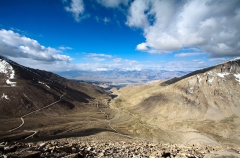 After breakfast, drive towards the Nubra Valley highway and enjoy a full day excursion to Khardongla pass, the highest motorable pass in the world. The Khardhongla Pass offers its visitors with the view snow capped mountains.
After breakfast, drive towards the Nubra Valley highway and enjoy a full day excursion to Khardongla pass, the highest motorable pass in the world. The Khardhongla Pass offers its visitors with the view snow capped mountains.
Late in the afternoon return to the hotel, at Leh.
Overnight at hotel
DAY 10 LEH – DELHI BY FLIGHT
After breakfast, you will be transferred to Delhi airport for your flight to Kathmandu
Depart : Leh at: 1120 AM by: Flight G8 220 (GO Air)
Arrive : Delhi at: 1300 PM
Upon arrival at Delhi, you will be transferred to your hotel.
Remainder of the day at leisure or You can visit Akshardham Temple Complex
Overnight at the hotel
DAY 11 DELHI – GORAKHPUR – LUMBINI BY FLIGHT /SURFACE
After breakfast, you will be transferred to Delhi airport for your flight to Gorakhpur
Depart : Delhi at: 0945 AM by: Flight AI 9809 (Air India)
Arrive : Gorakhpur at: 1145 PM
Upon arrival, you will be met and will be driven to Sunali border (Indo-Nepal Border) – 135 Kms/4-5 hours, complete the Nepal visa formalities upon arrival at border (max 30-45 Minutes) and later continue your drive to Lumbini (Nepal).
Upon arrival, check-in at your hotel
Remainder of the day at leisure.
Overnight at the hotel
DAY 12 LUMBINI
After breakfast, you will visit various religious sites in Lumbini.
Lumbini is one of the ten world sites for religious pilgrimage and sole source of worlds one of the major religions–Buddhism and the source of world peace and prosperity, and no doubt one of the places to be visited in your lifetime. Lumbini, the birth place of Lord Buddha, is one of the most popular destinations for the worlds over one million Buddhists.
Some 2,600 years ago, approximately in 566 BC, Siddhartha Gautam was born in Lumbini while his mother Maya Devi was on her way to her maternal home for the delivery, the holy book also says that Maya Devi feeling the onset of labor pains, she grabbed the branches of a shade tree and gave birth to Lord Buddha then, Immediately after birth, the Buddha is said to have announced that it was his final rebirth and took seven steps, under each of which a lotus flower bloomed, Siddhartha Gautam, was prince of Shakya King, who said to have ruled in central Terai from their capital at Titaurakot, later on had attained the enlightenment, at which time he became Buddha, (released from the cycle of birth and death), the sole source of the world peace and prosperity.
The Lumbini arguably has been world most important historical site and therefore why UNESCO even listed Lumbini under the lists of world’s heritage sites in 1997, and equally, it has been also the source of the one of the world’s great religions and the centre of country’s most significant archeological discovery, dating back from the third century BC. BBC travel team lists Lumbini, as one of the worlds 10 sites of religious pilgrimage. An estimation puts that nearly 100,000 travelers make it to Lumbini every years, this shows that how important and popular in the universe.
There are a number of ancient ruins of Buddhist monasteries, a sacred Bo tree, and a sacred bathing pool, called Puskharni pool, where Maya Devi had taken a bath before giving birth to Gautam Buddha, Maya Devi temple, scared garden spread over 8 Sq km, Ashoka pillar to name a few the Lumbini is situated in the foothills of the Himalayas of Nepal, which houses a large garden with a grove of Pipal trees, and the area is full of a number of religious and cultural sites, Buddhist temples and shrines from various nations are scattered around the holy site itself. But, the most important temple is the Maya Devi Temple, which enshrines the traditional site of the Buddhas birth.
Overnight at the hotel
DAY 13 LUMBINI
After breakfast, day at leisure to explore other places of interest on your own.
Overnight at the hotel
DAY 14 LUMBINI – KATHMANDU BY FLIGHT
After breakfast at the hotel, you will be transfer to Bhairwa Airport (near Lumbini) for your flight to Kathmandu
Depart : Bhairwa at: 0955 AM by: Flight 852 (Budhha Air)
Arrive : Kathmandu at: 1030 AM
Upon arrival at Kathmandu airport, you will proceed for half day visit to Kathmandu city.
This morning you will be taken for a visit of the Hindu culture in Nepal, Pashupatinath. This is the place where holy saddhus pray. The Pashupatinath Temple is a famous, sacred Hindu temple dedicated to Pashupatinath and is located on the banks of the Bagmati River 5 kilometres north-east of Kathmandu Valley in the eastern city of Kathmandu the capital of Nepal. This temple is considered one of the sacred temples of Hindu faith .The temple serves as the seat of the national deity, Lord Pashupatinath. This temple complex is on UNESCO World Heritage Sites’s list Since 1979.
We then continue to the holiest shrine for the Buddhist culture in Nepal, Bouddhanath, with its large stupa, this is the place where all devout Buddhists come for a pilgrimage. You will then go to Swayambhunath the golden spire of the 5th-century Swayambhu stupa is adorned with a colorful fluttering of prayer flags; it crowns a hill overlooking the Kathmandu Valley and offers fantastic views over the city of Kathmandu. Swayambhunath is one of the most recognizable symbols in Nepal and the painted eyes of Buddha watch all who ascend the worn stone steps.
In time, you will be transferred to Kathmandu airport for your onward flight (Flight can be booked ex Kathmandu airport or Delhi airport)
End of Tour
FAQs about this Tour
Q: What is the starting point of the tour?
A: The tour begins in Delhi, the capital city of India.
Q: What are the major attractions in Delhi?
A: In Delhi, you’ll visit iconic landmarks such as India Gate, Humayun’s Tomb, Qutab Minar, Jama Masjid, and Rajghat.
Q: What is the significance of Dharamshala?
A: Dharamshala is known for its spiritual ambiance and is home to the Namgyal Monastery and the residence of the Dalai Lama.
Q: What can I expect to see in Amritsar?
A: Amritsar is renowned for the Golden Temple, a symbol of Sikhism, along with the Durgiana Temple and historical sites.
Q: What is unique about Leh?
A: Leh offers stunning natural beauty, including Shey Palace, Thiksey Monastery, and the mesmerizing Pangong Lake.
Q: What is the significance of Lumbini?
A: Lumbini is the birthplace of Lord Buddha and features the Maya Devi Temple and other ancient ruins of religious importance.
Q: What attractions are there in Kathmandu?
A: Kathmandu boasts the Pashupatinath Temple, a sacred Hindu site, as well as the Bouddhanath Stupa and Swayambhunath Stupa.
Q: How will I travel between destinations on the tour?
A: The tour involves a combination of flights and surface transfers to ensure seamless travel between cities.
Q: Are there opportunities for cultural experiences?
A: Yes, the tour includes visits to monasteries, temples, and historical sites, providing rich insights into the local culture and traditions.
Q: Is the tour suitable for spiritual seekers and history enthusiasts?
A: Absolutely, the tour covers a wide range of spiritual and historical sites, making it ideal for those interested in exploring religious heritage and ancient civilizations.

